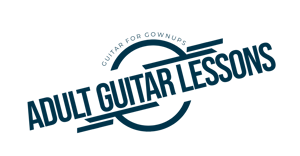Have you ever heard a guitar chord played on a recording that sounded “almost” like a standard chord – but had some little twist to it that you couldn’t quite figure out?
It could be that you are hearing a 7th chord, or major 7th chord, instead of the major chord. Or a minor 7th instead of a minor chord. Many times you will encounter an “over” chord.
An “over” chord is simply a chord with the addition of an extra bass note that is unrelated to the root note.
You may have seen “over” chords on music charts. They are typically notated with a “slash” (/). For example, you’ve probably noticed a D/F#, or a F/C, or A/C#, or something similar.
In these “over” chords, the letter on the left side of the “slash” denotes the chord name – and the letter on the right side of the “slash” denotes the bass note name that is added to the chord.
You can verbalize the above chords as follows:
D/F# = “D over F sharp”
F/C = “F over C”
A/C# = “A over C sharp”
Playing these chords is fairly easy if you know how to play the chord listed on the left side of the “slash”.
In the first example above. To play a D/F#, you would start by playing a standard D chord, then add the F# note to the bottom. It would look like this:
E———-2——–
B———-3——–
G———-2——–
D———-0——–
A———-X——–
E———-2——–
As you can see, you would play an open D chord, and then add the F# note on the 2nd fret of the 6th string.
Of course, the fingering could be a little tricky, so the easiest way to play this is to wrap your thumb around the top of the guitar neck to play the F#. Also, using the thumb, gently touch the 5th string (A) to mute it.
In the case of an F/C chord, it would look like this:
E—–1—————
B—–1—————
G—–2—————
D—–3—————
A—–3—————
E———————-
Obviously you will need to re-work your fingering to perform this one. It’s simply a matter of employing your pinky finger to play the note on the 3rd fret of the 4th string, and using your 3rd finger to play the new note on the 3rd fret of the 5th string.
To play the A/C# example, just form an open A chord using the “one finger” method with the 1st finger, and play the note on the 4th fret of the 5th string (C#) with the 3rd finger.
These are just a few examples of the many variations you can do. Once mastered, “over” chords are something you will use all the time, especially in “walk downs” and “walk ups” – so take the time to get familiar with them, you’ll be glad you did!
Enjoy!



